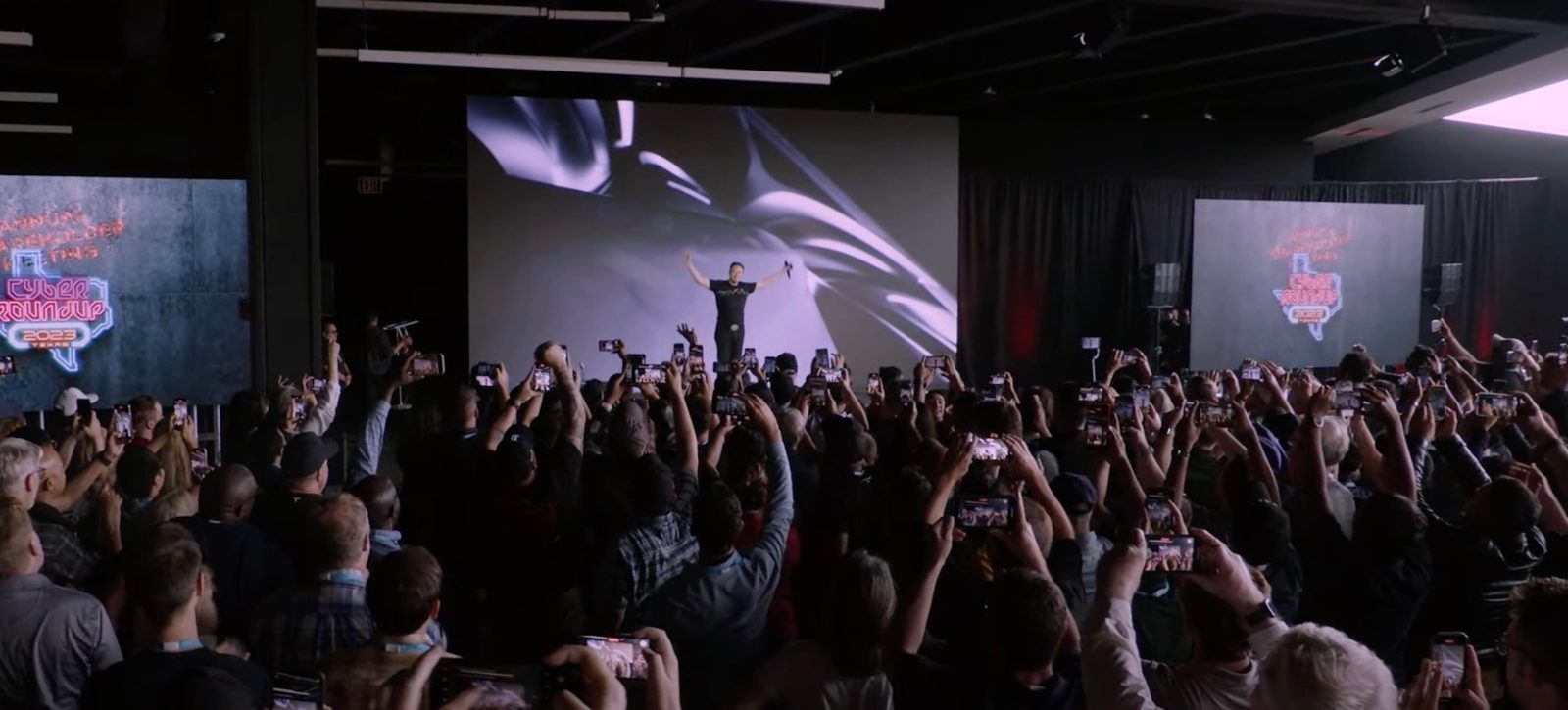
While Tesla is not directly involved in the United Auto Workers (UAW) strike affecting the Detroit Big Three automakers, it still looms large over the situation as both sides of the table feel the EV giant breathe down their necks.
The UAW strike has been going on for two weeks now and it is a pretty complicated issue.
It affects the “Detroit Big Three,” Chrysler (Stellantis), Ford, and GM, to varying degrees.
Tesla is the only major American automaker that doesn’t employ UAW workers, and therefore, it is safe in this strike, like some major foreign automakers that also produce vehicles in the US without union workers.
But despite not being directly involved, Tesla looms large over the negotiation table.
Tesla is responsible for pushing those three legacy automakers to accelerate their electrification plans, which is in fact one of the main points of contention.
The headlines are a lot about UAW asking for a 40% pay raise, a 4-day workweek, improved overtime and retirement benefits, but they are also looking for protection against factory closures as these legacy automakers opt for building new EV factories rather than converting existing internal combustion engine vehicle factories in most cases.
Electric vehicles are also simpler to build, and more labor efficiencies are expected to be discovered as production ramps and the products mature – making EVs a potential threat to UAW’s numbers, which have been dwindling for decades.
These automakers are all currently losing money on their electric vehicles while Tesla has industry-leading gross margins.
Therefore, any concession they make to UAW will make it even harder to catch up to Tesla.
Tesla CEO Elon Musk couldn’t stop himself from commenting on the situation. He believes that the pay raise and reduced hours that UAW is asking for would result in bankruptcy for the Big Three:
Morgan Stanley’s Adam Jonas seems to agree as he describes the situation as an “existential stand-off”:
It’s incredibly difficult to predict the duration of today’s strike given how far apart the 2 side appear to be, the motivations of the OEMs, and the broader political environment. In our view, even before a potential 30 to 40% rise in hourly worker labor costs, we questioned the ability of the D3 to be able to produce high volume EVs at a profit. An outlier inflationary outcome with the UAW merely earcerbates the issue. Our medium-term EV forecast for the D3 are far below management targets (i.e., one-third or one-fourth management’s targets) due to a variety of factors ranging from cultural to competitive… to cultural.
In short, Morgan Stanley doesn’t even see a path to profitability with EVs at scale for the big three, even if they achieve labor cost parity with Tesla, which sounds like it would not be possible with UAW’s demands.
Electrek’s Take
It’s hard not to sympathize with the workers, especially within this macroeconomic context. Inflation has hurt the working class badly over the last two years. A 40% pay raise sounds like a lot, but it’s not massive within the current context.
Top comment by Zzyzx
This will accelerate the D3 to push automation even more and outsource more component manufacturing to Mexico. The fact that the BEV space is only getting more competitive and foreign manufacturers are expanding their lineups will only make the situation more untenable for the D3. When all you competitors are paying less for labor for 40-hours of work, it only makes sense to simplify the vehicle construction further (castings front and rear) that reduces the number of folks needed to build a vehicle. Allocate the lower performers to the ICE vehicles planned for cancellation and suddenly you become more efficient as a company.
I don't want anyone to lose their job, but the overall skillset of an assembly line worker is not very high compared to an engineering or other position that requires higher education. This seems to be the typical short-term vision that so many groups focus on instead of long-term solutions.
However, I can also understand the side of automakers, especially based on that analysis from Morgan Stanley.
The numbers are just not there on the sides of EVs, and that’s worrying those automakers as it becomes clear that it is the future of the industry.
It’s not clear to many based on the current profits that they are registering, but they are literally trying to find ways to survive the next five years. Those current profits are coming from their ICE business and providing parts for that ICE business. That’s gradually going away this decade, and if they can’t replace it with a healthy EV business, they are going to be gone.
That means that UAW is also going to be gone, which the union should keep in mind amid the negotiation. I know that’s hard to do when you see executive compensation and how the top leaders of the big three are filling their pockets without having a great solution to their EV problem yet.
FTC: We use income earning auto affiliate links. More.




Comments